Magical Things to Do in Seville Spain
Seville in the south of Spain is one of our favourite cities to visit in Spain and hopefully this article will make the most of your visit to Seville. There are so many things to do in Seville and it is easy to get to from Malaga many will make the drive or even take a train to Seville. Seville also happens to be one of the prettiest European cities you can visit.
Seville is one of the most famous cities in Spain and it is simply packed with things to do. The air is scented with orange trees and the famous Seville oranges and the architecture ranges from the Mudéjar to the renaissance. The top things to do in Seville include enjoying dramatic flamenco, Spanish Food: 43 of the best foods in Spain to enjoy at many tapa bars, art and festivals you will never forget.

We love Seville for its vibrancy, its beauty and its expansive Spanish history. You really should spend at least 48 hours in Seville if you truly want to enjoy this incredible city. Seville is one of the best experiences you need to have in Spain. Seville is also a fantastic jumping off point for day trips and excursions for the rest of Andalucia.
20+ Pros and Cons of Living in Spain

History of Seville
Seville made its wealth in medieval times as a trading port. With river access to the sea from the Guadalquivir River, Seville protected trading ships, allowing the city to prosper. Within the historic city centre, you will find 3 UNESCO World Heritage sites to learn more about how Seville developed.
Legend has it that Seville was founded by Hercules who then granted it to his son, Hispano, which led to it having the name ‘Hispalis’. As a settlement, it was first founded by the Romans, before being conquered by the Muslims in the 8th Century. It then became part of the Christian kingdom of Castille in the 13th Century.
In 43 BC, the city was taken by Julius Caesar, who changed its name to ‘Lulia Romuela’ or ‘Romula’, and it became one of the most important cities in the Roman province of Hispania Baetica, being Christianized towards the end of the empire.
After the discovery of America in the 16th century, Seville became the principal economic centre of the growing Spanish Empire.
- Magical Things to Do in Seville Spain
- History of Seville
- Things to do in Seville Spain
- The Seville Fair
- Things to see in Seville
- The Alcazar of Seville
- Parque de Maria Luisa
- The Archeological Museum of Seville
- Museo de Bellas Artes
- Palacio de las Duenas
- The magnificent Seville Cathedral
- Visit the Tomb of Christopher Columbus
- Walk the Plaza de España
- Casa de Pilatos
- Visit the Giralda Tower
- General Archives of the Indies
- Lose Yourself in Barrio Santa Cruz – the Jewish Quarter
- Río Guadalquivir
- Flamenco Dance Museum
- The Mercado de Triana
- Where to stay in Seville – Great Hotels in Seville
Xyuandbeyond is reader-supported. When you buy through links on our site, we may earn an affiliate commission. You can read my privacy policy here.
Things to do in Seville Spain
In 1987, three buildings in Seville were named UNESCO sites. These are definitely These are definitely Seville attractions to see if you don’t have a lot of time.
- Real (Royal) Alcazar of Seville
- Seville Cathedral
- Archive of the Indies
- Attend the Seville Fair
If you only have 48 hours in Seville, we recommend booking tours to see these fabulous buildings. Not only will you be impressed with the architecture, but also with its incredible history.
And of course, a must do Seville is to experience the best of Flamenco while in Seville, along with tasting some of the many flavours of tapas.
Seville is, of course, the most beautiful city in Spain to visit but if you want to check out the 10 most beautiful cities in Spain and go visit these gorgeous other areas of Spain.

The Seville Fair
The Seville April Fair, known as the Feria de Abril, is a highly anticipated event that begins just two weeks after Semana Santa, and one of the fun things to do in Seville. The celebration takes place in a sprawling fairground, known as Los Remedios, located southwest of the city. Traditionally, the fair spans a week, typically from the 14th to the 20th of April.
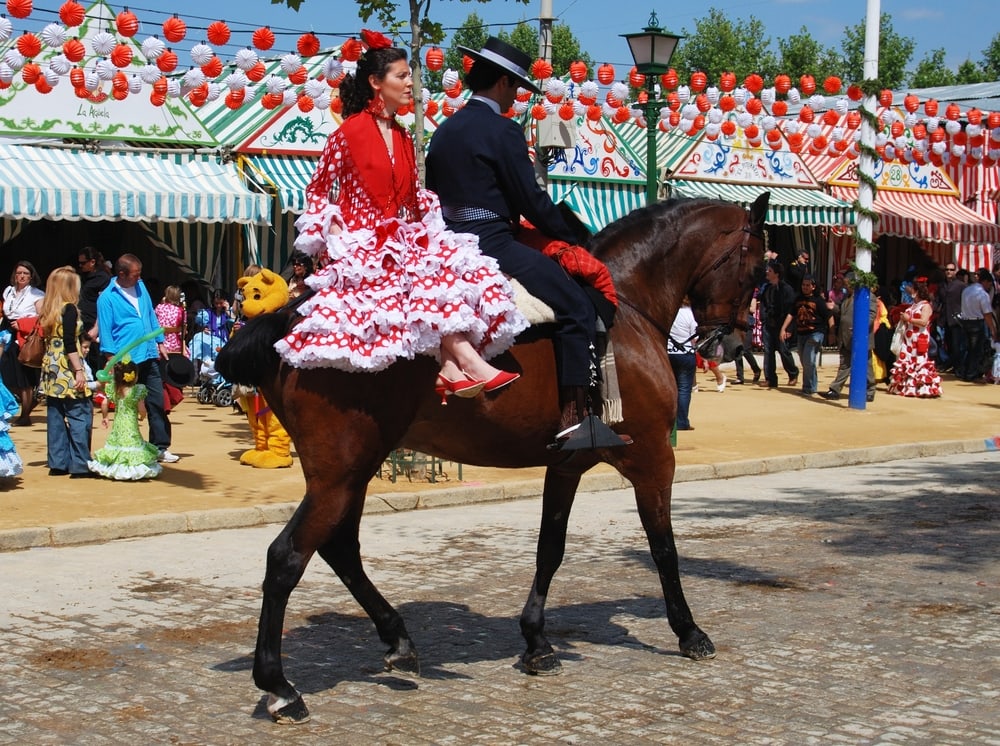
The fair is a joyous week of lively dancing, convivial gatherings, and indulgence in food and drink, often stretching into the late hours of the night, or even all-night affairs. Seville’s high society parades through the fairground in carriages or on horseback, creating a captivating display of elegance.
When is the best time to go to Seville?
If hot sun and high temperatures are not your ideal climate, then April and May, or September and October are temperate months to visit. The weather is still warm, but pleasant enough to walk and enjoy your Seville stay.
June, July and August are the hottest months with temperatures at times exceeding 40 degrees Celsius.
For more information, Seville’s Tourism Office is the place to start.
Things to see in Seville
Getting around the city is easily done on foot, so pack a good pair of walking shoes. And walking is a lovely way to experience and see so much more. With most of the must-see places near each other, you can combine a walk with a stop for a great coffee or a glass of sherry wine.
Best Views of the city of Seville
The Metropol Parasol is the largest wooden structure in Seville with an archaeological museum and rooftop walkway that is now a City icon. has become a city icon. On the rooftop walkway, you have panoramic views over the city and the sunsets are amazing.

The Torre del Oro also called the Gold Tower is a 13th-century watchtower in Seville, Spain. It is one of the most visible landmarks in the city and houses the Seville Maritime Museum. The museum is small but offers a lot of information about the founding of the city and its navy.

The Alcazar of Seville
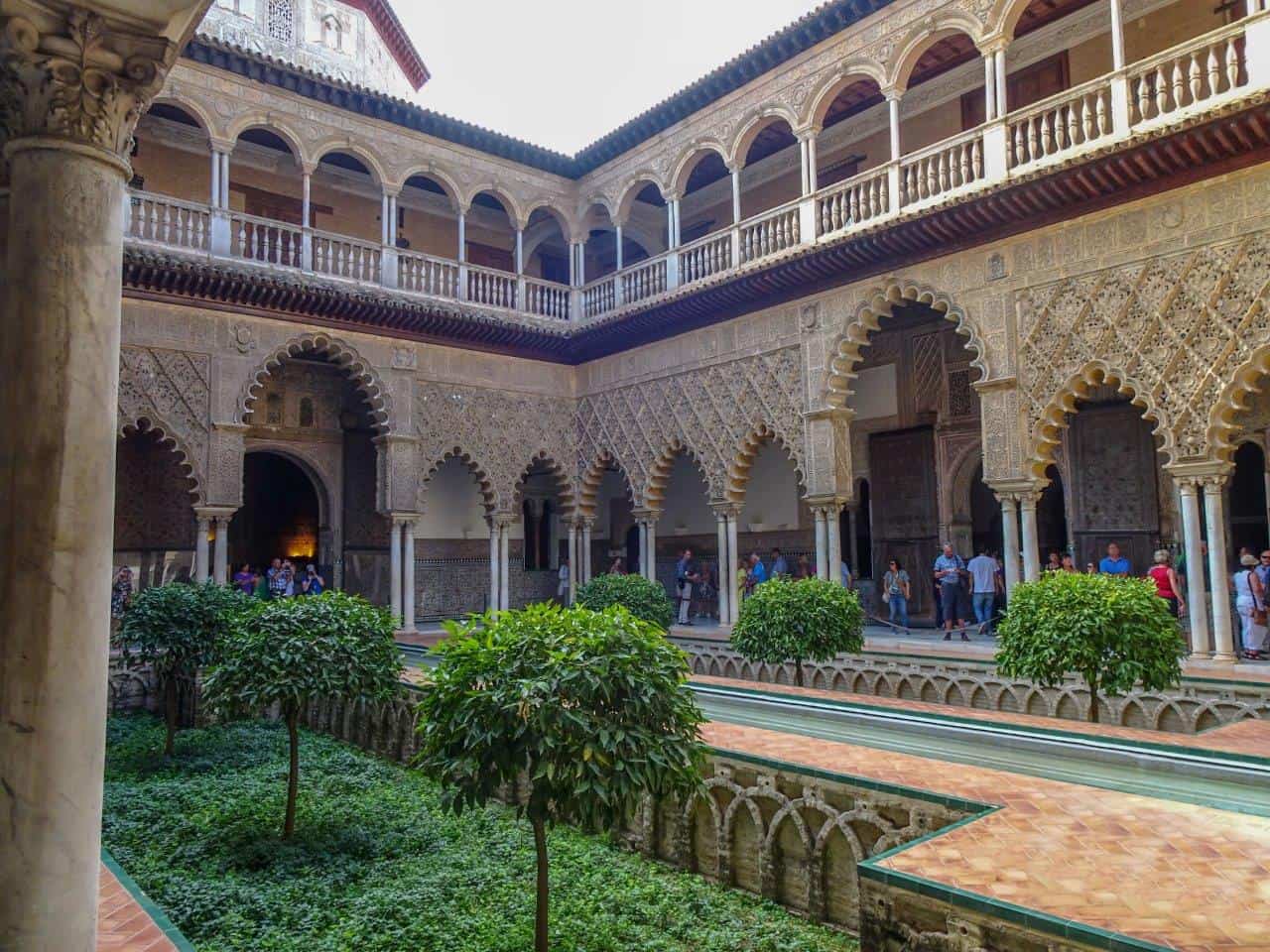
Originally constructed for King Peter of Castille on the site of a Muslim fortress, the royal palace is still used by the Spanish royal family, the upper rooms are a personal residence today. The Real Alcazar showcases an interior of Moorish and Gothic architecture which will have your jaw-dropping. Just the number of beautiful tiles decorating the interior rooms is stunning. The Real Alcazar is a Royal Residence and has been for over 1,000 years.
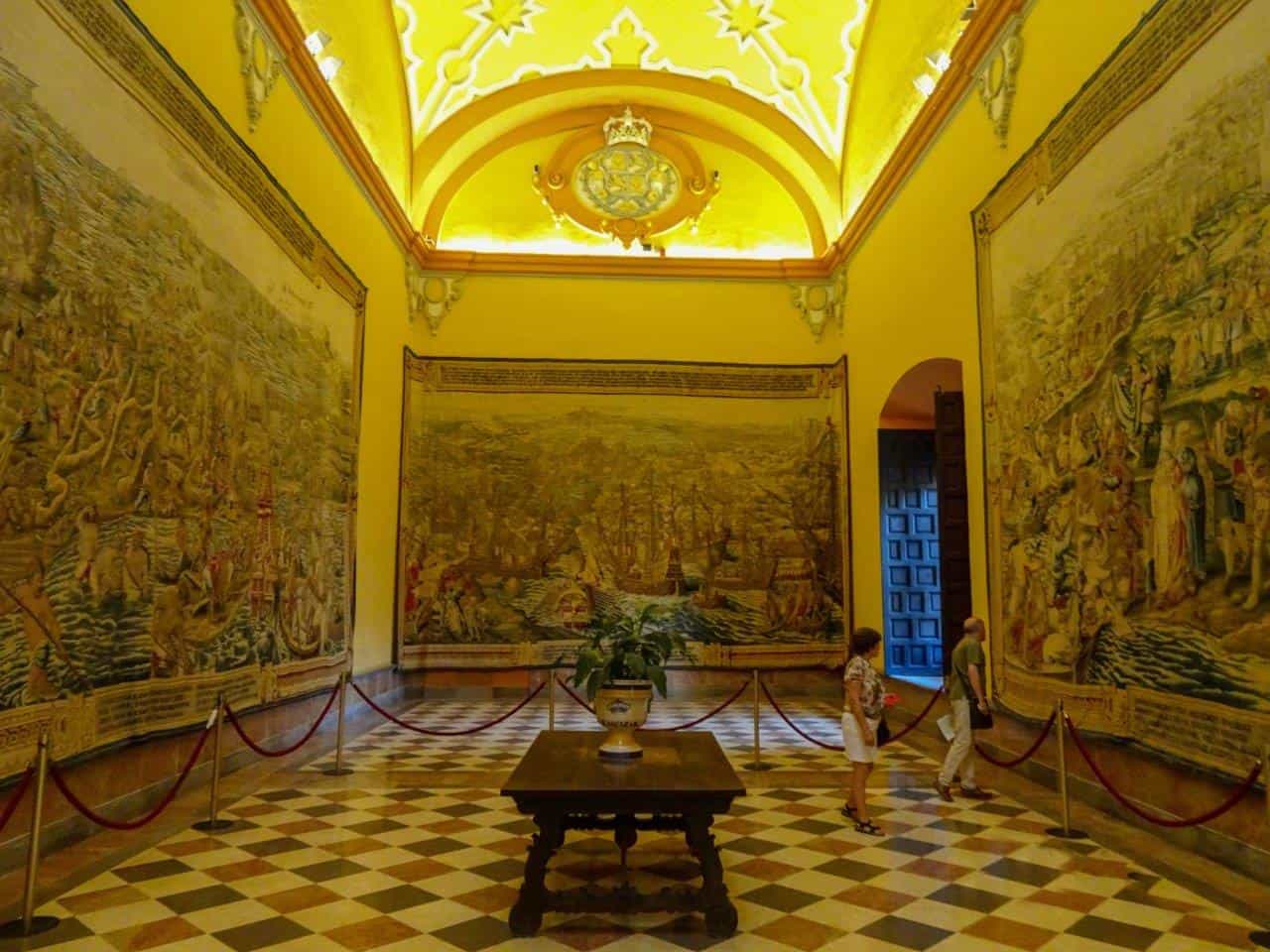
And of course, to learn the history of the Palace and the historical events which took place within some of its many rooms. Not only are the tiles for decoration, but also in some rooms, they tell a story of a historical event.
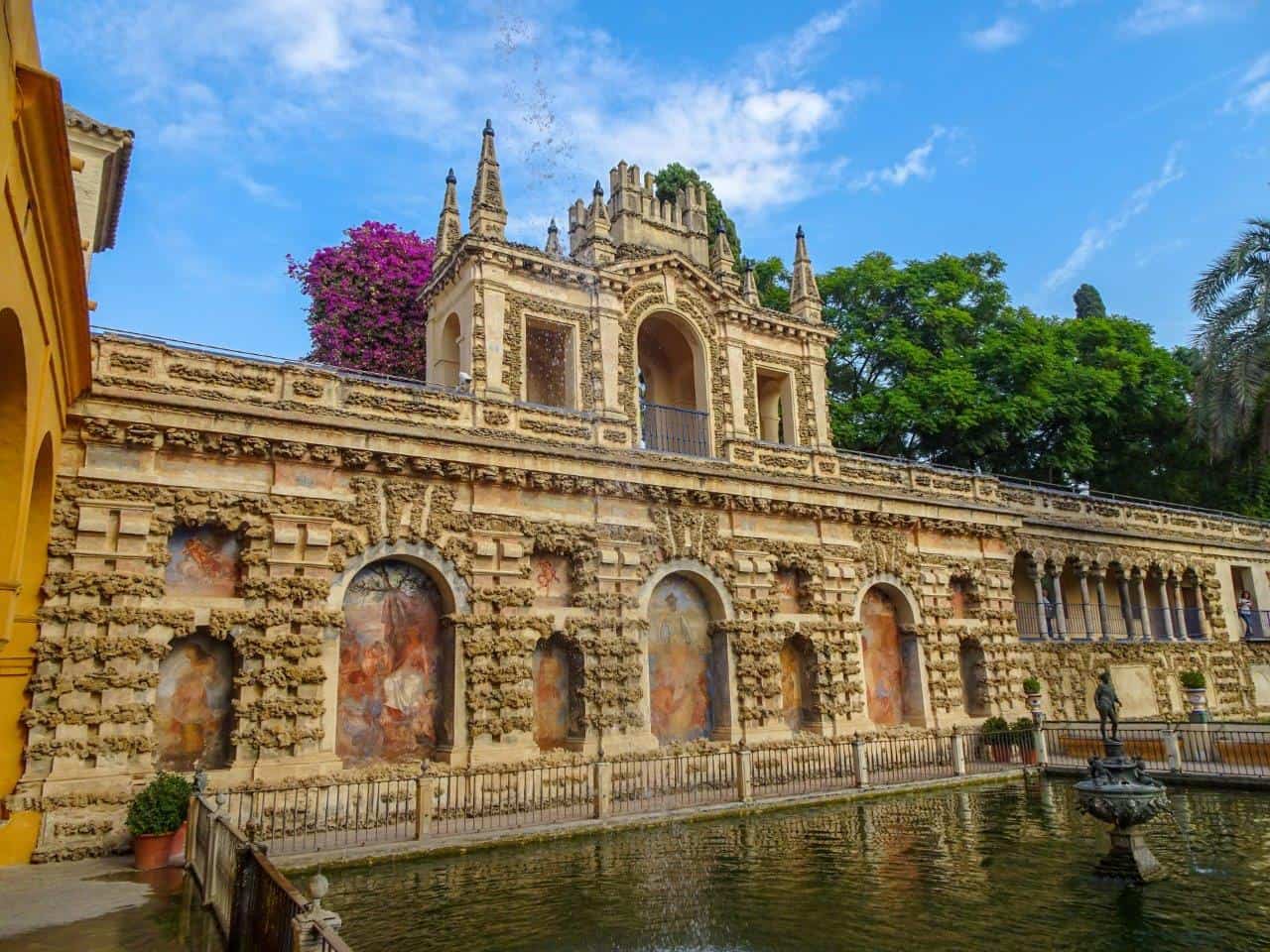
One of our favourite rooms was the Maps Room where Christopher Columbus met to discuss the voyages of discovery. The walls are covered with various Coats of Arms.
A tour of Real Alcazar will take well over an hour with a guide, leaving you time at the end of the tour to enjoy the Gardens and find the Baths of Lady Maria de Padilla. The baths were initially built as a garden to escape the heat of the Spanish sun.
Ultimate Guide For Visiting the Alhambra Granada 2023
Parque de Maria Luisa
In central Seville you need to wander around the Parque de María luisa which was formerly a private garden of the Palace of San Telmo and was donated in 1893 by the Infanta Maria Luisa Fernanda de Borbon (Duchess of Montpensier) to the city.
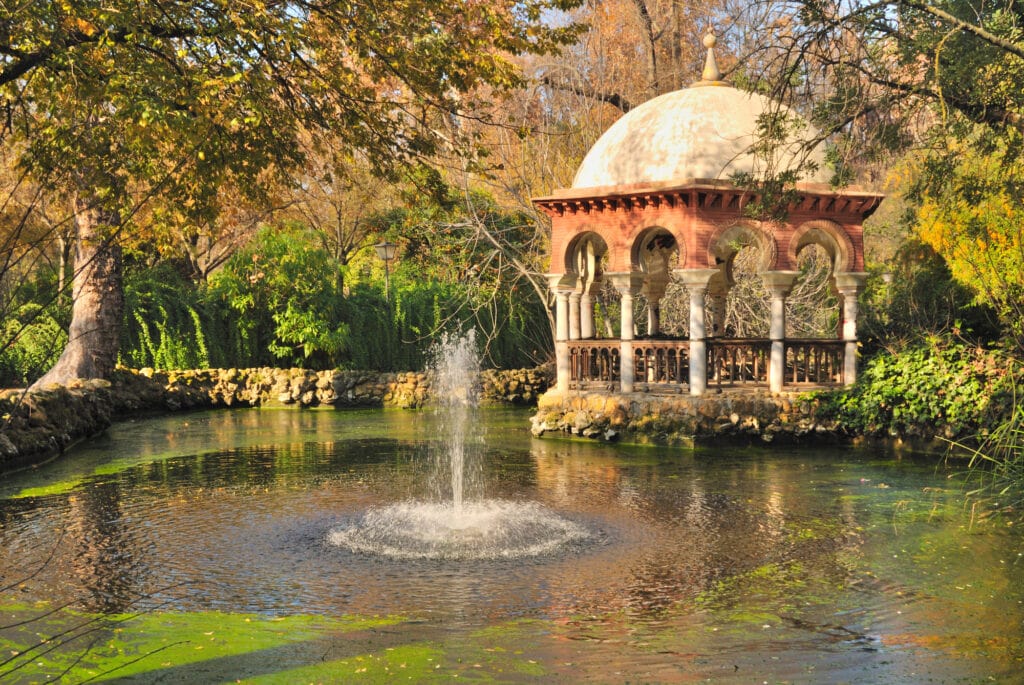
Within its 34 hectares, you can stroll in the shady woods or visit the Garden of the Lions or sit by the Frog Fountain. The park is the perfect romantic place to wander in Seville.
The Archeological Museum of Seville
The Pabellón Mudéjar is home to the Museum of Arts and Traditions of Seville. And the Pabellón del Renacimiento houses the Archeological Museum and can be found in the Maria Luisa Park.
Within the archaeological museum, a treasure trove of artifacts discovered in the province spans from prehistoric eras to Roman times, encompassing the renowned excavations of Itálica, as well as artifacts from the Medieval Moorish period. During your visit, you will have the opportunity to explore these captivating finds, presented in a chronological order across three floors and 27 rooms.
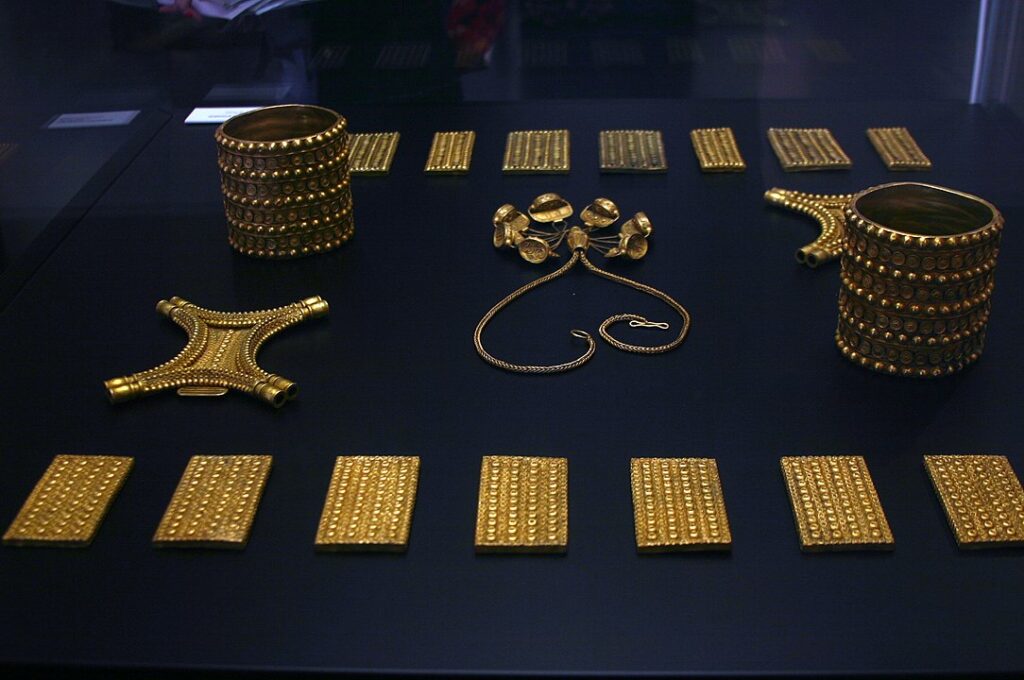
Of particular significance is the Treasure of Carambolo, an exceptional highlight housed in room VI. While the original treasure is securely stored away, a remarkable replica is on display for visitors to admire. Originating from 650 BC, the Treasure of Carambolo comprises exquisite gold jewelry, golden pieces, and ceramics. These precious items were once part of a sacrificial offering made by the Iberian ‘Tartessier’ tribe to one of their revered deities.
Museo de Bellas Artes
Founded in 1835, Seville’s Museo de Bellas Artes – which occupies a former 17th-century convent built around three tiled patios – houses pieces from the medieval period to the early 20th century. The galleries include works by some of Spain’s most notable artists, such as Bartolomé Esteban Murillo and Francisco de Zurbarán.
Palacio de las Duenas
A gorgeous 15th-century palace, that was the favourite of the late Duchess de Alba, Palacio de las Dueñas, is a major landmark in the city. A blend of the Gothic-Mudejar architectural styles it’s one of the best sites to add to your Seville itinerary. The palace is easy to get to from the city center and is one of the best places to visit and a true hidden gem in Seville. A favourite meeting place of kings, celebrities and royalty during the 20th century, Jacqueline Kennedy, and Grace Kelly used to visit. The architecture itself is worth the trip, along with the lush gardens and an impressive collection of artifacts.
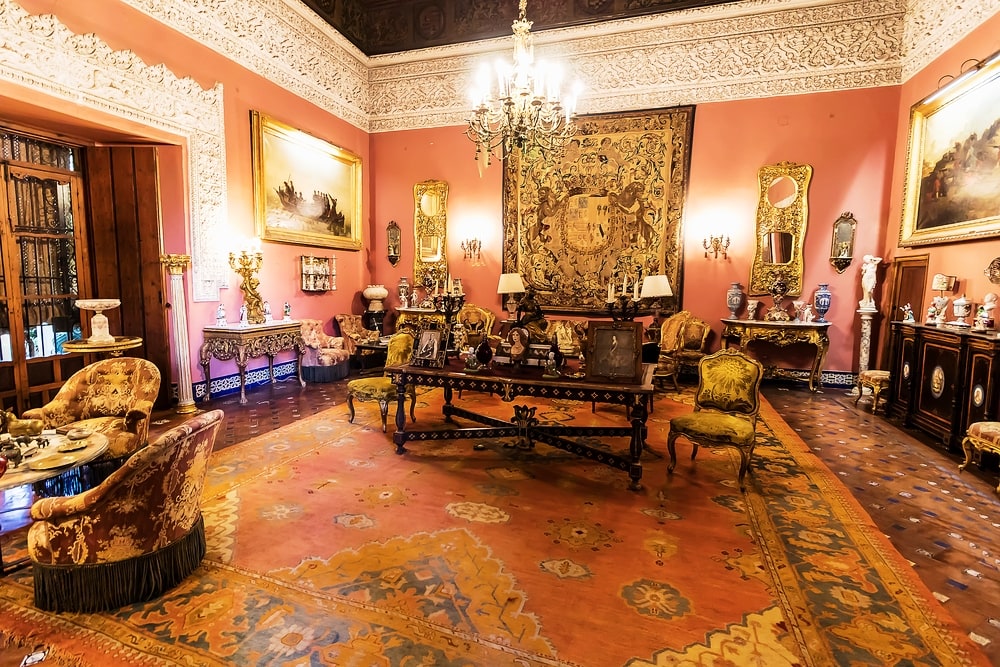
Horse drawn Carriage rides
One of the most romantic things to do in Seville is to take a romantic horse drawn carriage ride around the city carriage “stations” are scattered almost everywhere in the city centre.
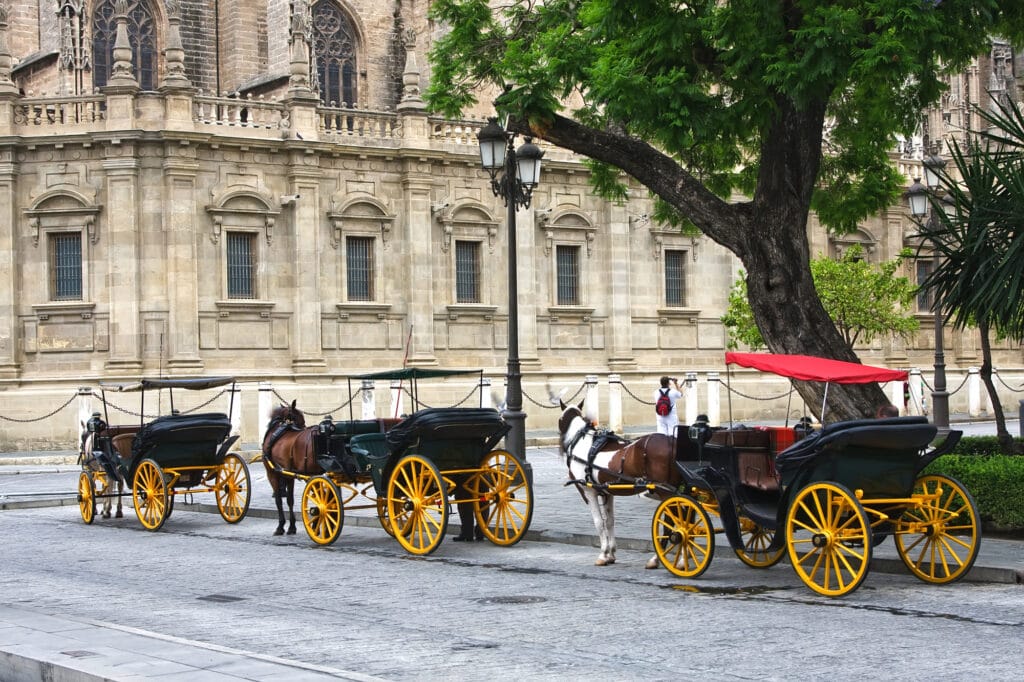
The magnificent Seville Cathedral
One of the best things to do when planning your Seville itinerary, make sure you add a visit to the third-largest cathedral in the world. The Cathedral of Seville is also the resting place of Christopher Columbus, making the Seville Cathedral a must-see when in Seville.
The Seville Cathedral was made a UNESCO site in 1987 and dates to 1517, even though some of the interiors of the cathedral was only finished in the 20th century. And with 80 chapels, there is a lot to see inside.
But what makes the visit to the cathedral special, is knowing the cathedral was constructed over the Grand Mosque built in 1198.

Visit the Tomb of Christopher Columbus
The largest Gothic cathedral in the world and the burial place of Christopher Columbus, Seville Cathedral is a must-see. Columbus died in the Spanish city of Valladolid but it was his wish to be buried in the New World he had discovered. His daughter-in-law took the bones back to the Dominican Republic where they stayed until 1975.

When the Spanish finally left the Caribbean they brought his bones back with them to Spain. On the tomb you will see the figures that represent the four regions of Spain: Leon, Aragon, Navarra and Castilla each of which wears the coat of arms of their respective kingdoms.
Walk the Plaza de España
The Plaza was built in 1929 for the Ibero-American Exhibition this 50,000 square metre plaza contains impressive canals, fountains, Venetian-style bridges and stunning mosaic-tiled alcoves representing the 48 regions of Spain.
the buildings now hold government offices but have been used as locations for films and television shows such as Lawrence of Arabia, Star Wars: Attack of the Clones, and HBO’s Game of Thrones.
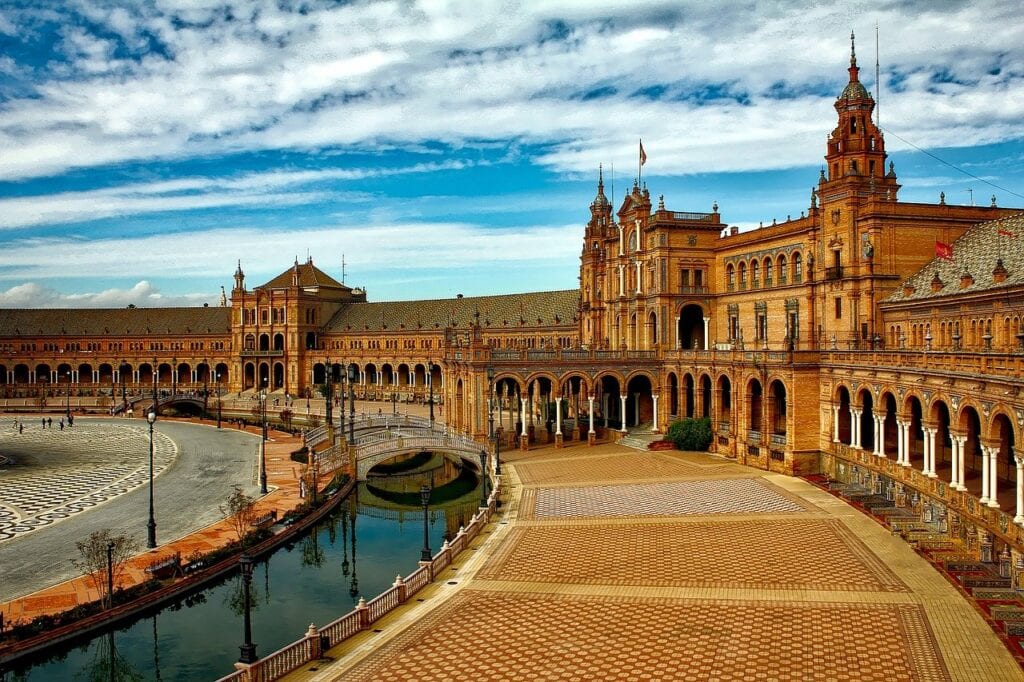
Casa de Pilatos
Located in the historical center of Seville Casa de Pilatos is one of Seville’s most beautiful sites. Built during the 16th century, this is one of Seville’s stunningly preserved civil palaces and it is still the permanent residence of the Duke of Medinaceli.
Located in the historical centre of Seville, Casa de Pilatos is characterized by its fusion of Italian Renaissance, Gothic and Mudejar architecture. Feast your eyes on its marble gates, colourful tiles, ornate arches and simply incredible garden.

Visit the Giralda Tower
One of the most impressive sights to see in Seville is the La Giralda Bell Tower, originally built as the Marionet of the Great Mosque. Those men assigned to give the Call to Prayer for the Moors living in Seville would ride donkeys up to the top of the 104-metre tower.
Just be warned, be prepared for a climb but you will be rewarded with some stunning views of Seville.

General Archives of the Indies
In this wonderful Spanish Renaissance building, you will find the historical documents of Spain’s interests and trading history in the Americas and the Philippines.
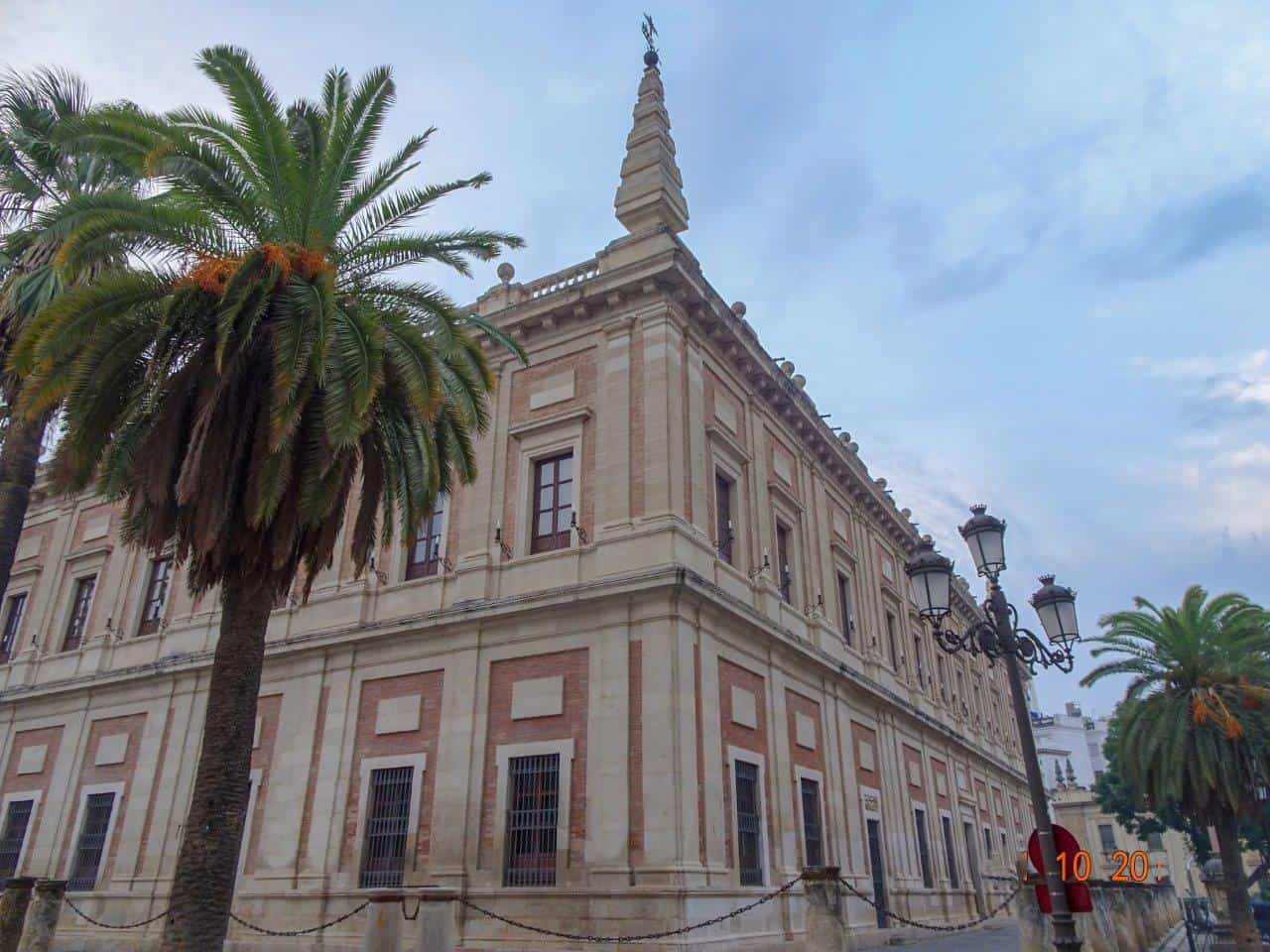
The archives were commissioned by King Charles III in 1875, to be stored in what was once the merchant’s exchange building. It was here, that trade was discussed when built in 1646. To think, Christopher Columbus thought he had discovered India, when in fact it was the Americas.
The archives will also reveal the history of the Conquistadors, professional soldiers who travelled further than the Americas to secure lands for Spain. Hernan Cortes is famous for the downfall of the Aztec Empire of Mexico. You can read more of this period of history at National Geographic – Conquistadors Lost Ships.
Lose Yourself in Barrio Santa Cruz – the Jewish Quarter
One of the things to do in Seville is to walk the medieval quarter known as Santa Cruz.
Seville Spain’s points of interest include Barrio Santa Cruz! This was the old Jewish Quarter in Seville, way back in 1248. When King Ferdinand took the city he confined the Jews to this area and today it is one of Seville’s most vibrant neighbourhoods.
The narrow streets and tall buildings were constructed to ensure plenty of shade during the hot summer months. Look out for Calle Agua which runs along the walls of the Alcazar.

The quarter is famous for its houses along cobblestoned narrow streets where Christians, Jews and Muslims once lived together in peace during the reign of King Fernando III.
You will also find lots of small restaurants offering some of the best Tapas to try.

In the evening, find one of the small plazas hidden around the quarter to enjoy a local beer or wine with delicious tapas in the early evening.
Río Guadalquivir
The río Guadalquivir is the river of Seville, the only navigable river in Spain. This river has played a leading role in many of the city’s historic moments. Sieges, defences and conquests have been fought on its waters, and exploits and crossings have been forged from its shores.

The “First Sailing Around the World” exhibition is, located on the banks of the Guadalquivir River, next to the Gold Tower. In the exhibition centre, visitors may discover the very first planetary circumnavigation and experience, firsthand, the history behind Magellan’s ambitious adventure. You can also explore the Nao Victoria 500: a majestic life-size replica of the legendary ship that starred in that journey.
Flamenco Dance Museum
One of the top things to do in Seville is to experience a Flamenco performance this is the best way to get an authentic feel of Spain and to be honest it wouldn’t be a trip to Seville without seeing Flamenco. Seville is famous for its Flamenco Dance Museum. The Museo del Baile Flamenco was created by famous dancer Cristina Hoyos and it opened its doors in 2006. It aims to inform you about everything related to flamenco, its origins, influences and styles and about how it’s practised today
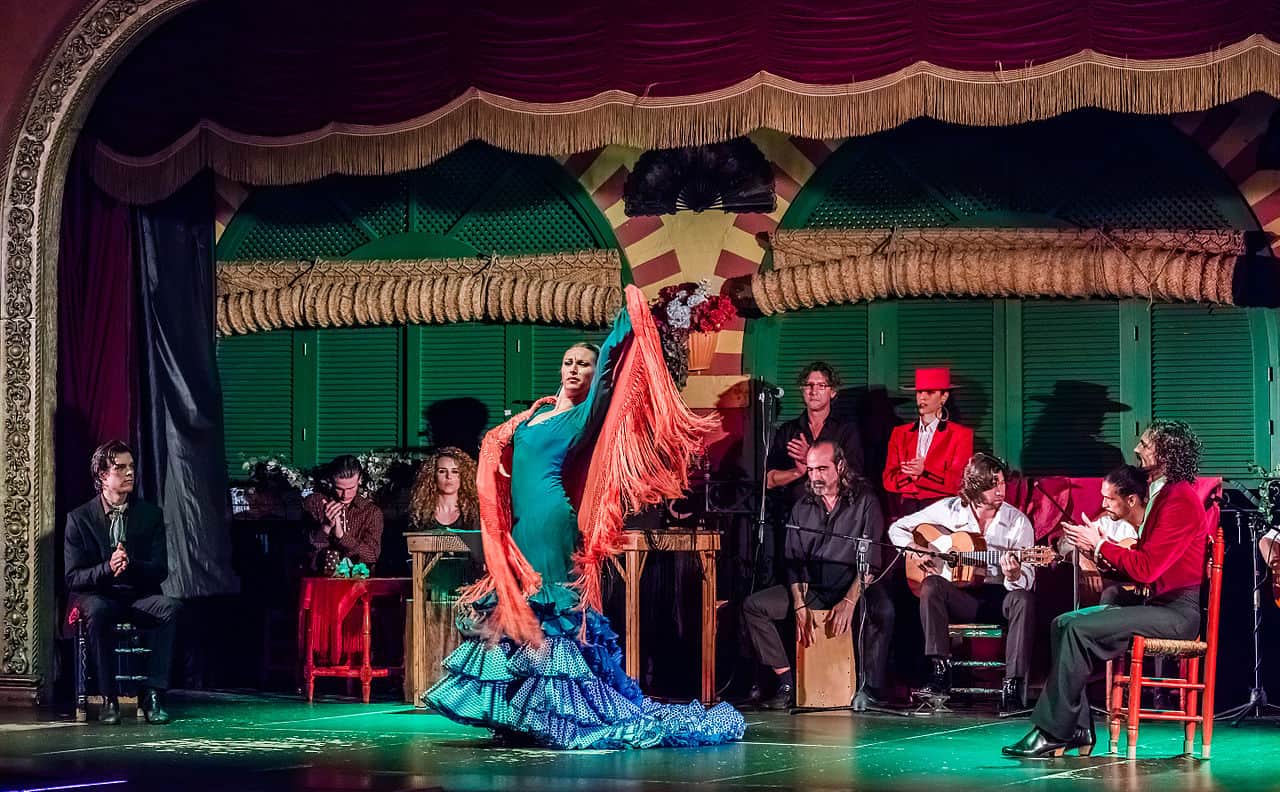
Within the city of Seville, there are several places to enjoy traditional flamenco with folklore music dating back to 1774 with its origins from the region of Andalusia.
It was originally folklore singing but over time it has added guitar and dancing. The music will have you enthralled as you are taken back to medieval times when Flamenco singing was an outlet for those oppressed.
Food in Seville
From Montadito de Pringá a speciality of Seville which reminds me of pulled pork to churros with chocolate and tapas the food you find in Seville rivals anywhere else in the world.
The cuisine of Seville is Andalusian that hails from the region of Southern Spain and it has been influenced by a multitude of flavours, from North African to Moors, Christians, Jews, and Romans. Regional Andalusian cuisine includes; gazpacho, gambas (shrimp) right at the water’s edge, octopus, paellas, almorejo (an almond soup) and a host of other delicacies. You absolutely must try paella when in Seville.
The Mercado de Triana
Triana Market can be found in the Triana neighborhood of Seville and is situated near the Isabel II Bridge. It was constructed on the remains of the Castle of San Jorge, which served as the headquarters for the court of the inquisition.
Adjacent to the market building, there is a basement that can be explored by visitors. It displays a variety of archaeological artifacts and is accessible to the public. Within the market itself, there are both food stalls and small eateries that specialize in serving tapas. Additionally, local handmade crafts can be found there. This is an ideal place for purchasing regional goods, as approximately 80 grocery stores selling fruits, fish, sausages, baked goods, restaurants, and bars can be found there. For added convenience, the market also includes a gift shop, theater, and even a cooking school!
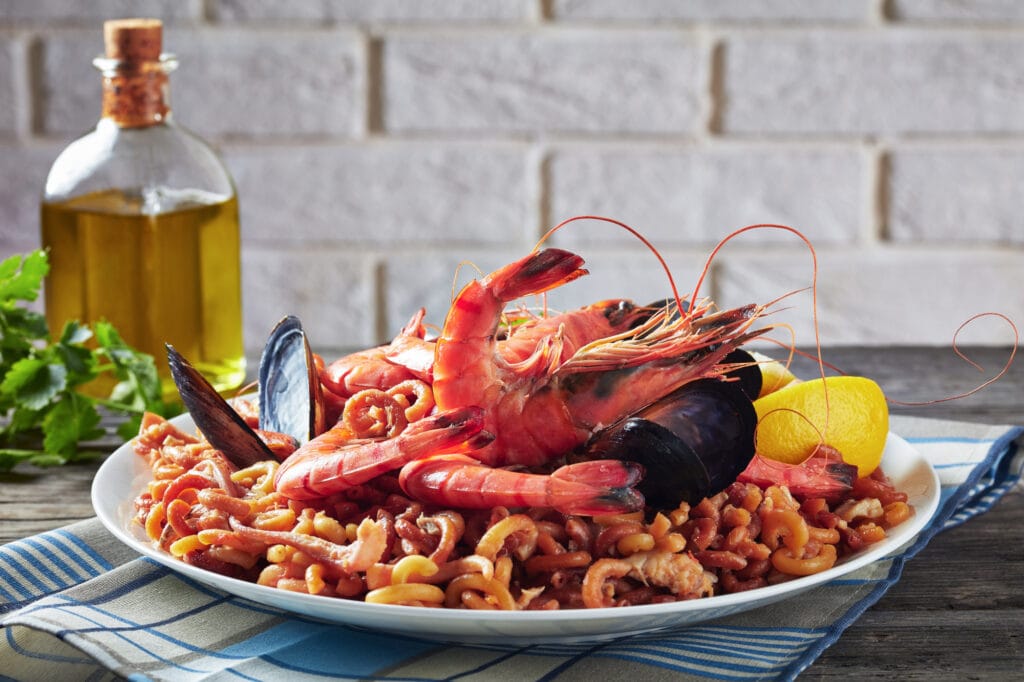
What is the difference between Pincho, Tapa and Raciones?
Seville offers a some great bars and restaurants to enjoy not only Tapa but many delights of Andalusian cuisine. First you need to understand the difference between tapas, and pinchos. In the Basque country, they serve pinchos or pinxtos which comes from the Spanish verb ‘pinchar’, which means ‘to pierce’. The main difference between pinchos and tapas is that pinchos use toothpicks to keep the food on top of the bread. If you are eating pinchos you must save your toothpick as this is how the waiter calculates your tab.

Similar to ordering Chinese food raciones are simply larger portions of the single tapas. It could be a plate of grilled sardines or anchovies, a platter of honey-drizzled eggplant or some deep-fried squid rings.
Where to stay in Seville – Great Hotels in Seville
Hotel Alfonso XIII, is a luxury hotel that sits right next to Seville’s Real Alcazares inside one of the city’s landmark neo-Mudéjar buildings. Built by King Alfonso XIII back in 1929. One of Spain’s most prestigious hotels, Hotel Alfonso XIII, a Luxury Collection Hotel, Seville is located next to Seville’s Real Alcazares. It offers an outdoor swimming pool, gym and a typical garden courtyard with a fountain.
Alfonso XIII’s elegant design includes Arabic-style arches and ceramic tiles. Rooms are individually decorated and feature air conditioning, a minibar, a bathrobe and slippers.

Hotel Palacio de Villapanes is a converted 18th-century palace situated just outside Seville’s historic Santa Cruz district. The hotel features a rooftop sun terrace with a small plunge pool and free WiFi.
The hotel offers elegant lounges and a typical central courtyard with marble columns and tiles. Traditional Andalusian cuisine is served in the restaurant, and you can enjoy tapas outside on the garden terrace. The hotel serves breakfast at an extra cost.
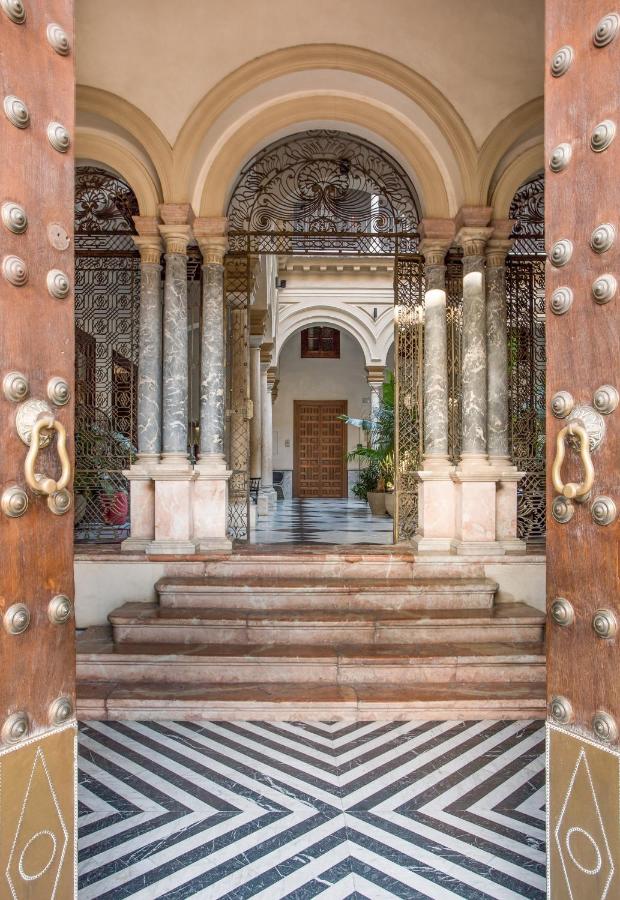
The Black Swan Hostel Sevilla is located in the centre of Seville and features a communal rooftop terrace with city views. The modern hostel offers air-conditioned rooms with free WiFi. It also offers a shared lounge and a kitchen.
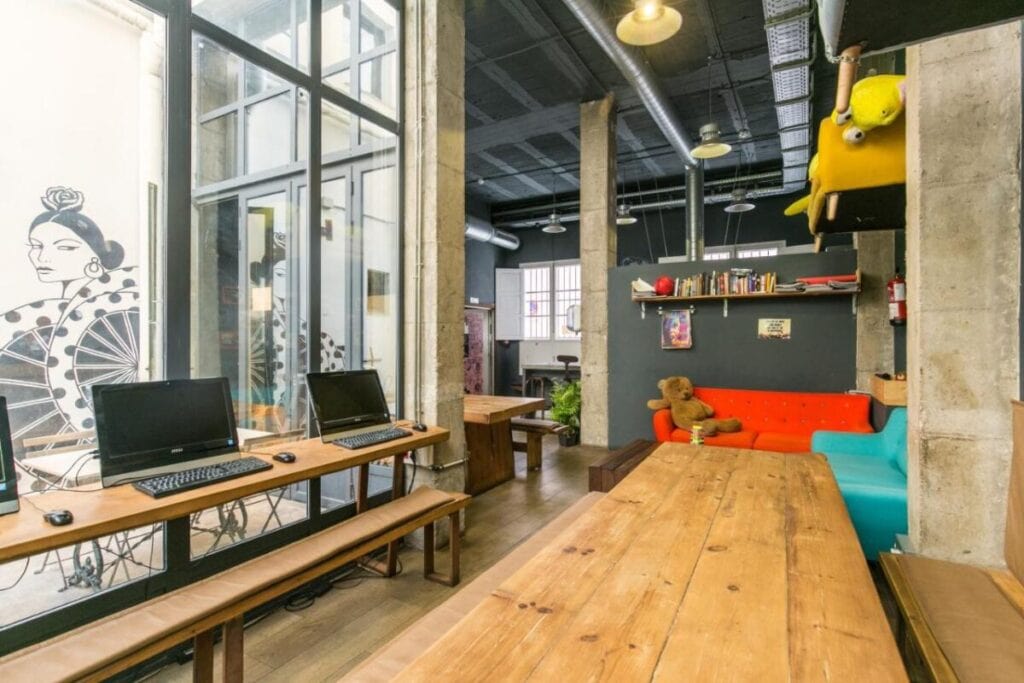
With influences from the Moors, the Arabs, Gypsies, Jews and Christians, Seville is the city to put on your bucket list of travel destinations. If you only have 3 days to explore Seville then you need to check out Mark and Paul’s article 3 days in Seville Itinerary.
Don’t neglect getting out of Seville and seeing Andalucia’s stunning white villages there are several villages you can visit on quick day trips from Seville, including the incredible Ronda, Granada and the Alhambra, Cadiz and Cordobaf to name a few.
Seville is a city that offers endless possibilities for any traveller. From exploring the historic neighbourhoods to enjoying the vibrant nightlife, there are many things to do in Seville that will make your trip unforgettable. The cultural richness of this beautiful Andalusian city is reflected in its architecture, food, art and music. Whether you are interested in history or just want to relax and soak up the atmosphere, Seville has something for everyone. So pack your bags and get ready to experience all that Seville has to offer!
You Might also like
Mojácar Spain: the perfect guide to this charming village
The Best Things To Do in Valencia
Magical Things to Do in Seville Spain
Celebrating Christmas in Spain: 22 Traditional Spanish customs
23 Unique Things to do in Cartagena Spain
